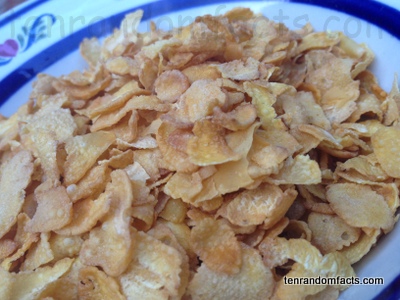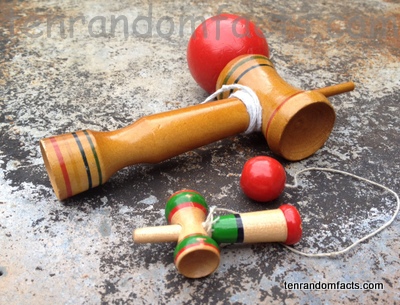
Pour a bowl of corn flakes.
- Corn flakes are a breakfast cereal made primarily of corn and sugar.
- Corn flakes were invented by the Kellogg brothers, John H Kellogg and Will K Kellogg, and their flaked cereals were first patented on 14 April 1896.
- In the 1890s, in the United States, the famous Kellogg brothers took stale cooked wheat, rolled them into flakes and recooked them, which was a successful turn of events, and so other grains were experimented with, being cooked in a similar manner, which led to the invention of corn flakes.
- Corn flakes are typically flakes that are orange-yellow in colour, have a crunchy texture, and soften with milk which is usually served in a bowl with the cereal.
- The mascot of Kellogg’s corn flakes is commonly a rooster, while Sanitarium’s corn flakes has a kangaroo as a mascot.
- Corn flakes were first produced by Kellogg’s, but now there are numerous brands of corn flakes, including Sanitarium, generic brands, and gluten free brands.
- Corn flakes are generally high in iron, vitamin B12, vitamin B6, thiamin, niacin and other vitamins.
- In the 1920s, corn flakes were introduced to Australia, and became so popular that they have been manufactured there ever since.
- Corn flakes were first sold publicly in 1906, and in 1909, a booklet was given as a bonus if two boxes were purchased, with the offer lasting for over two decades.
- Corn flakes can be found as a component in other packaged cereals, and made into snacks such as bars, cookies, or ‘honey joys’.
Bibliography:
Cornflakes, 2013, Wikipedia, http://en.wikipedia.org/wiki/Corn_flakes
Kellogg’s Cornflakes, 2005, The Great Idea Finder, http://www.ideafinder.com/history/inventions/kelloggcf.htm






















